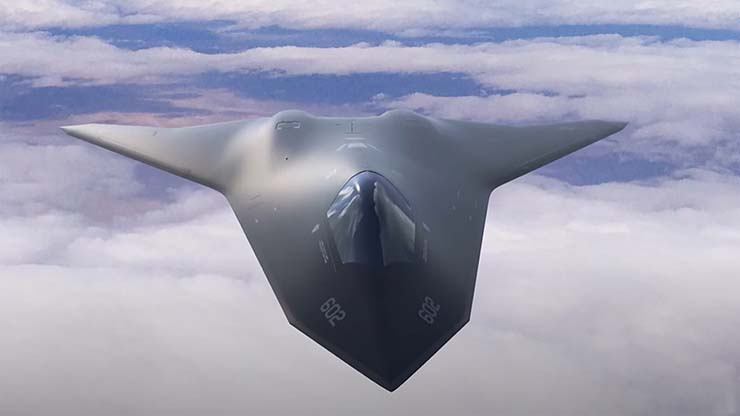
Air superiority has underpinned the United States’ ability to deter or defeat its adversaries. In this era of rapidly advancing technologies, air dominance is a critical imperative for success across all domains. Adversaries continue to rapidly develop and deploy advanced anti-access/area-denial threat systems, shrinking the U.S.’s technological lead. Now is the time to enhance our strength with next-generation air power capabilities, and next-generation propulsion is the key to future air power edge.
The Next Generation Air Dominance (NGAD) family-of-systems is critical to “Tactical Air Dominance”, a key U.S. Air Force operational imperative to preserve our nation’s competitive advantage to deter and win. The family-of-systems networks around crewed NGAD fighter aircraft that will team with fleets of uncrewed Collaborative Combat Aircraft.
The propulsion system is the heart of every aircraft. Technologies are being developed for the Next Generation Adaptive Propulsion (NGAP) program to provide advanced survivability, fuel efficiency, and robust power and thermal management. These are necessary to enable the required range, weapon and sensor capability, and the persistence that future air dominance platforms will require to meet challenging operational needs.
The U.S. Air Force’s investment in the Adaptive Engine Transition Program (AETP) has proven to be invaluable as AETP learnings are playing an important role in informing the technologies and architectures that are flowing into the NGAP program. Air Force Propulsion Directorate Director John Sneden commented in a Defense News article after the July / August Life Cycle Industry Days that even though sizing may differ between the NGAP and AETP programs, some technologies may be “resized, redesigned” or even “portable”.
“We continue to partner with the U.S. Air Force and Life Cycle Management Center to develop critical propulsion technologies that are needed to power the next generation of fighter aircraft,” said Peter Sommerkorn, executive director of 6th Generation Programs at Pratt & Whitney. “The President’s Budget request for $595 million for NGAP, which was also supported by the congressional marks, will help to retain competition through the prototyping phase and support a healthy industrial base. The industry will continue to look to decision makers to prioritize additional adequate funding for 6th-generation propulsion development to support critical platform milestones and warfighter readiness in a timely manner.”
In addition to government funding, Pratt & Whitney has also made significant investments in research and development, supporting capability development, advanced industrial manufacturing, and sustainment capacity. The company is committed to supporting the U.S. Air Force air superiority mission and powering the future NGAD family of systems.
Not only is the NGAP program a key enabler for the future NGAD platform, but it is also driving digital transformation within the propulsion industry. Pratt & Whitney embraced digital design from the start and completed a digital Preliminary Design Review (PDR). By completing a digital PDR, P&W has met a significant milestone that demonstrates the company’s commitment to transforming how it delivers advanced capabilities. Investments in digital development will enable the U.S. to maintain its technological advantage in advanced propulsion systems. This digital focus coupled with the implementation of Agile methodology has cut lead times and improved efficiency and effectiveness.
Pratt & Whitney has been developing propulsion technology in conjunction with the U.S. Air Force as part of adaptive engine development programs for more than a decade. Pratt & Whitney is the exclusive propulsion provider for the United States’ decisive 5th generation aircraft, providing unmatched thrust, survivability, and reliability. For the next generation of propulsion systems, Pratt & Whitney will leverage this expertise to power the advanced aircraft required to fly, fight and win.















